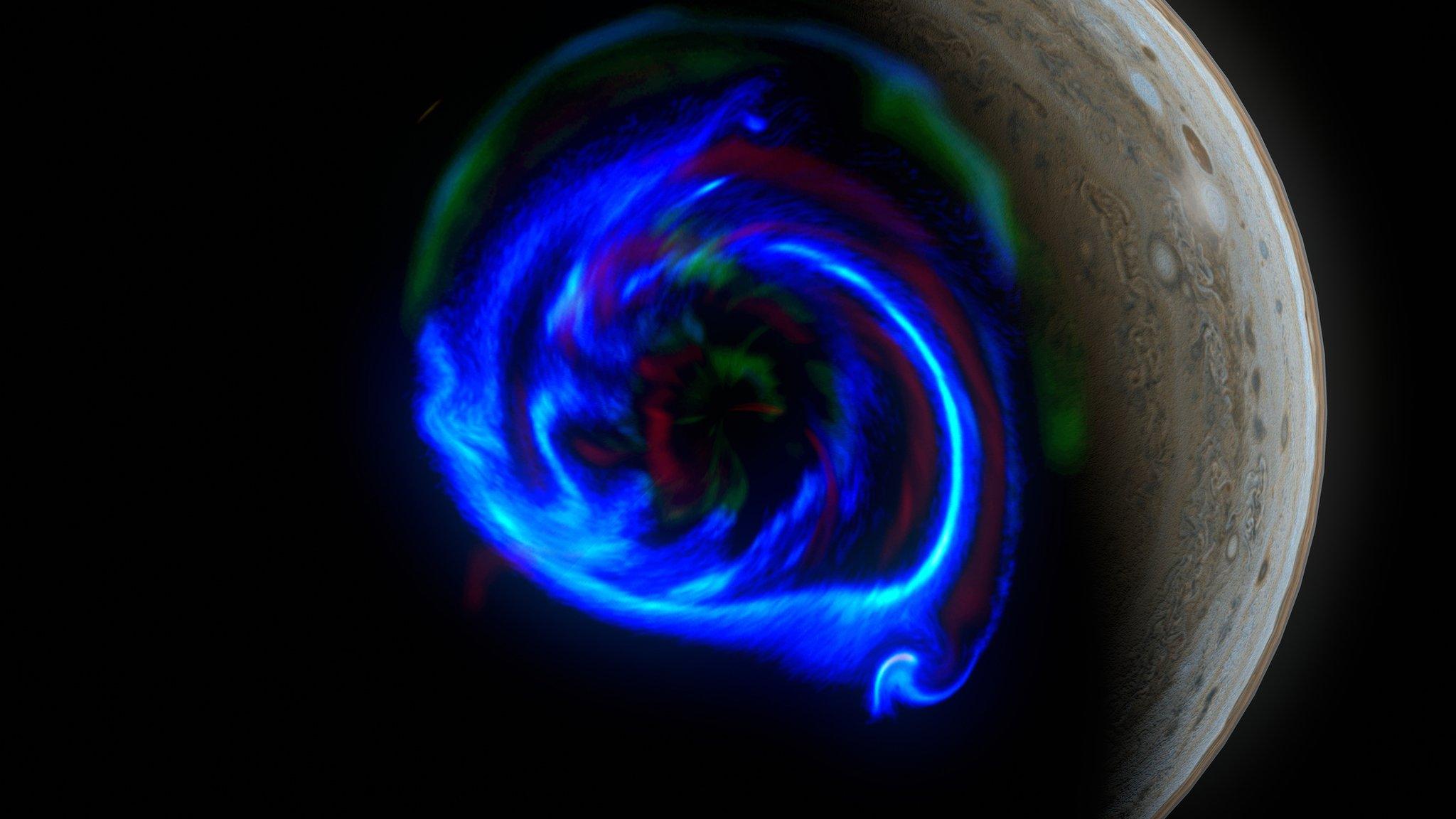Jupiter: How to see the planet in the sky on Thursday
- Published
- comments

If you're a lover of all things space, there's an exciting treat in store for you this week!
Jupiter will be particularly visible to the naked eye on Thursday evening and it promises to be an even more spectacular sight through a pair of binoculars or a telescope. The planet will appear as a bright star in the sky, although not with the usual twinkle that the large balls of gas are known for.
So why will Jupiter be so bright this week? It's because the planet will be at "opposition", which means that as Earth passes between the Sun and Jupiter, the planet will appear as though it is opposite the Sun.
Read on to find out what time is best to spot Jupiter and Saturn and how to see them.
Why can we see Jupiter so brightly?
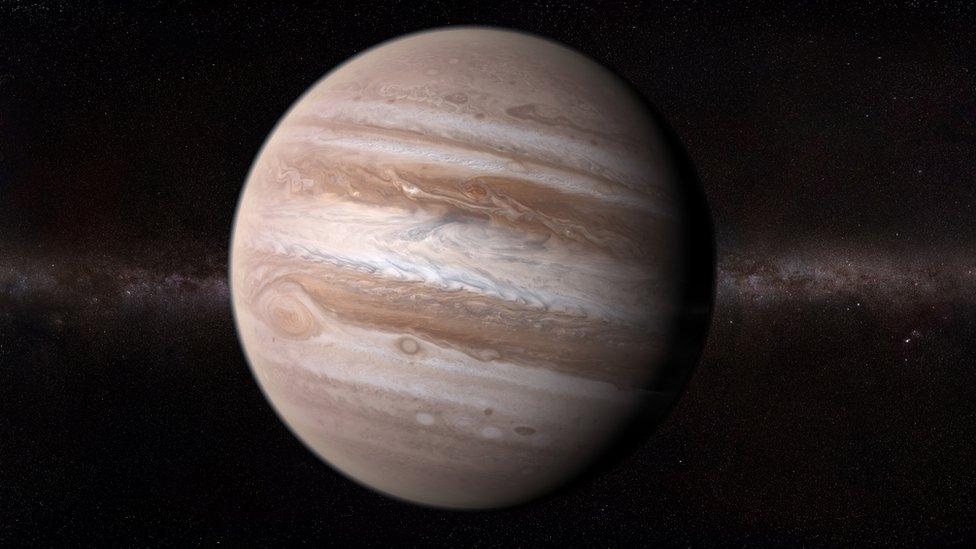
Jupiter will be visible to the naked eye on Thursday evening
"When a planet is at opposition, it is on the opposite side of the Earth to the Sun - if you were looking down on the Solar System from above and drew a line from Jupiter to the Sun, when Jupiter is at opposition it would pass through the Earth," said Bryony Lanigan, an astronomer at the Royal Observatory Greenwich.
Although Jupiter can be spotted throughout the year, being at opposition makes it look especially bright.
Bryony added that planets are usually in opposition for a very short length of time but, during that brief window, they can be clearly visible to the naked eye.
"Jupiter should be visible low above the south-eastern horizon from sunset on the days around opposition on the 19th, but if planet-hunters wait until a few hours after sunset then it will have risen a little higher - around 20-25 degrees altitude - and so will be easier to spot," she said.
Super Saturn sightings too!
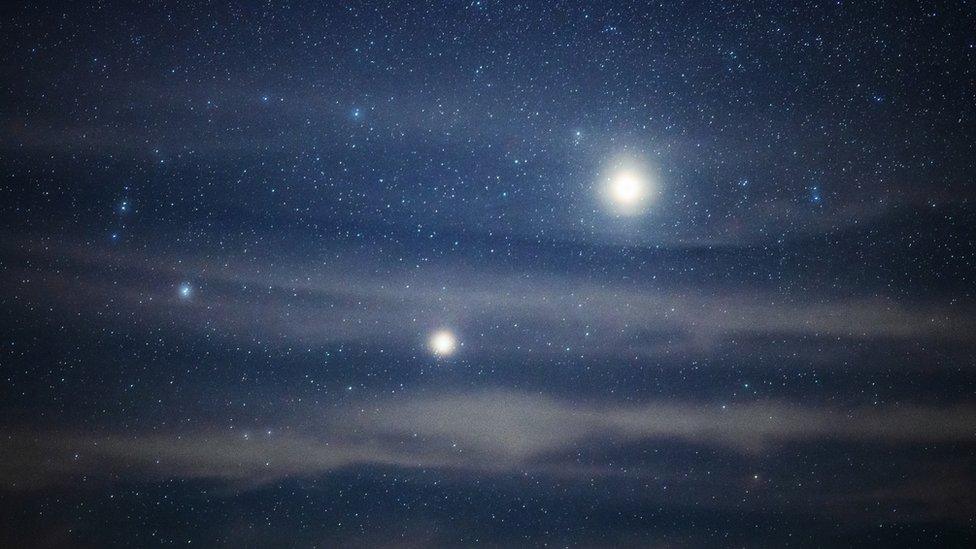
Stargazers may also be able to catch a glimpse of Saturn too
Jupiter isn't the only planet on show. Planet hunters may also be able to catch a glimpse of Saturn as well!
"Both planets are fairly low on the horizon, so try and find an observation spot free from tall buildings or trees when looking in that direction," said Ed Bloomer who is also a Royal Observatory astronomer.
"There's a chance you could get a good photograph featuring stars, planets and the Moon."
He also said those looking through telescopes may catch a glimpse of Jupiter's moons, as well as Saturn's rings.
"The Galilean moons (Jupiter's four largest moons - Io, Europa, Ganymede, and Callisto) will look like pinpricks of light in orbit around Jupiter," the astronomer said.
"Around Saturn you may be able to make out the rings, and even major divisions within the rings.
Top tips for spotting stars and planets in the sky
WATCH: Ezzy tells Ricky what to look out for this summer
If you want to spot some of space's spectacular wonders this month, it's important to be ready! Here are some top stargazing tips.
1. Make sure you're wearing the right clothes to stay warm, dry and visible if you'll be heading outside and ensure you're somewhere safe
2. The clearer the sky, the better for stargazing! Try to find somewhere away from artificial light, such as lampposts, so you can see what's going on in the sky clearly
3. Give you eyes time to get used to the dark so you can see more!
4. You don't need any fancy equipment to stargaze, but a pair a pair of binoculars can be really useful in helping you get an even better view
- Published14 July 2011
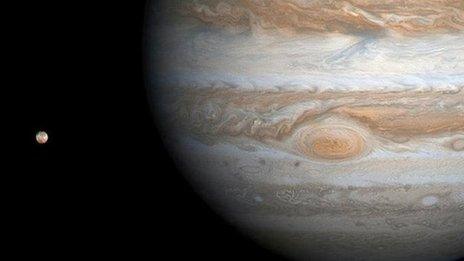
- Published10 August 2021
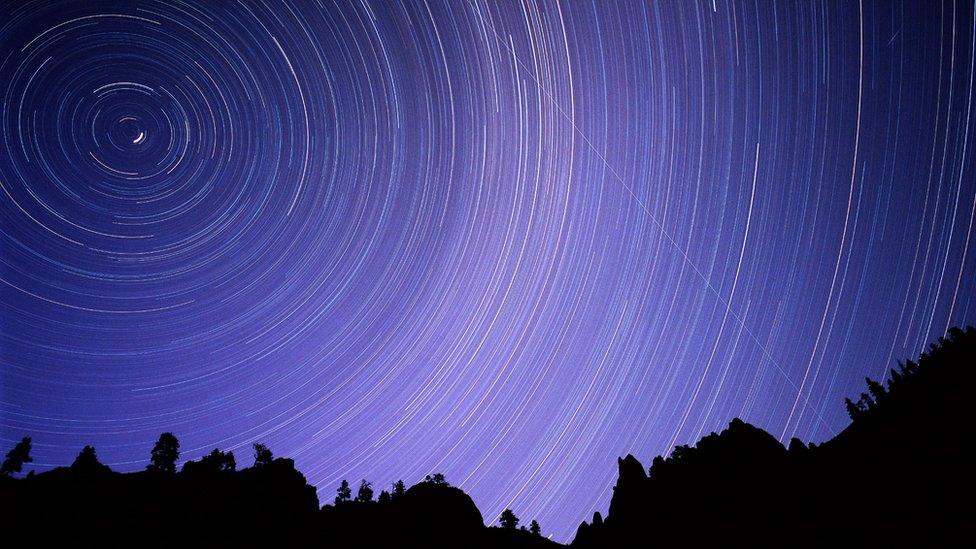
- Published10 July 2021
